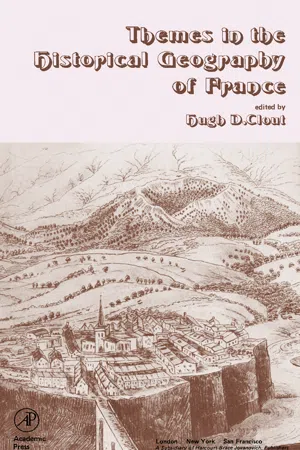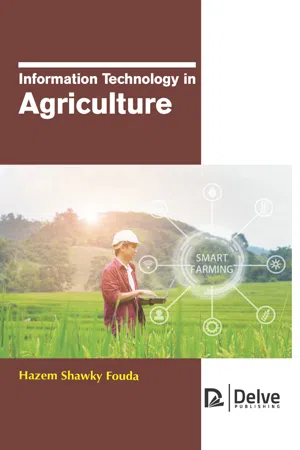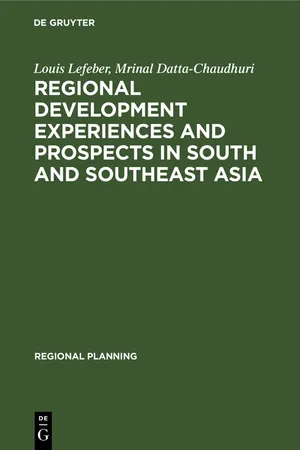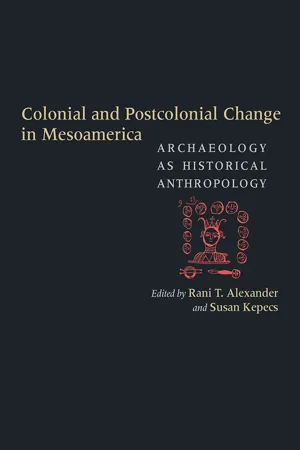Geography
Agricultural Revolutions
Agricultural Revolutions refer to significant changes in agricultural practices that led to increased food production and population growth. The first Agricultural Revolution occurred around 10,000 years ago with the development of farming, while the second Agricultural Revolution occurred in the 18th and 19th centuries with the introduction of new technologies and practices such as crop rotation and mechanization.
Written by Perlego with AI-assistance
Related key terms
1 of 5
9 Key excerpts on "Agricultural Revolutions"
- Shahal Abbo, Avi Gopher, Gila Kahila Bar-Gal(Authors)
- 2022(Publication Date)
- Cambridge University Press(Publisher)
1 WHAT IS THE AGRICULTURAL REVOLUTION? The Agricultural Revolution (which made us all – humans – food-producers) is a major landmark in human history. It reflects a significant transformation in the general organiza- tion of human society and its components (see Glossary, General Terms, Agricultural Revolution). Since the advent of humans as tool-makers, some three million years ago, that is, since the moment we began producing tools and using them as a key vehicle in our daily activities, no transformation was as significant as the Agricultural Revolution. After three million years of living in small, mobile communities while subsisting by hunting animals and gathering plant foods, the Agricultural Revolution, which took place post-Pleistocene, during the Neolithic period, just over 10,000 years ago, brought about a prominent transformation in human life-ways. Mostly, it allowed humans to become food-producers, rendering them a unique and singular being on Earth. Small or large sedentary farming villages, characterizing the new way of life in the Near East, soon grew in size to very large villages, also known in Neolithic research as towns, 1 which later became cities (Figure 1.1). Some claim that the development of cities in the Near East about 6,000–5,000 years ago, compared to the large villages that preceded them, was but a natural development of phenomena that had originated in the Agricultural Revolution. Others see a major significance in this transformation of urbanization. In their view, and we concur, this was another revolution that bore additional extensive consequences for the socio- economic fabric.- eBook - ePub
Geographies of Agriculture
Globalisation, Restructuring and Sustainability
- Guy Robinson(Author)
- 2014(Publication Date)
- Routledge(Publisher)
2 The changing focus of agricultural geography2.1 ‘Traditional’ agricultural geographyThis chapter focuses on how the content of agricultural geography has evolved post-1945, thereby providing a context for the more extended consideration of key components of agricultural change in the rest of the book. Emphasis is placed upon how there has been a move from a ‘traditional’ form of agricultural geography to new approaches embracing different ideas from across the social sciences.A standard definition of agricultural geography in the mid-1980s referred to ‘the description and explanation of spatial variations in agricultural activity over the earth’s surface’ (Ilbery, 1985a, p. 1). This interpretation was based largely on consideration of two major avenues of enquiry that had dominated agricultural geography in the twentieth century:• Location and context, in which emphasis was placed on the regional characteristics of agricultural activities, especially broad trends and tendencies (Coppock, 1968; 1971).• Explanations of agriculture’s great diversity, through consideration of relationships between the large number of relevant variables associated with social, economic, physical and historical factors affecting agriculture (e.g. Grigg, 1992a).The regional focus in the first of these can be traced to the first time that a specialism specifically termed ‘agricultural geography’ played a leading role in the development of geography as an academic discipline. This was in the 1920s when agricultural geography was one of the principal specialisms that emerged as part of the growth of regional geography as the discipline’s central paradigm (Johnston, 1997, pp. 44–52). An example of this was Baker’s (1926) work on the recognition of ‘agricultural regions’ in different parts of the world. The region became the central focus of study for agricultural geographers, with both singleattribute and multi-attribute regions being recognised. Indeed, for the first half of the twentieth century agricultural geography involved regional delimitations following large-scale mapping of distributions of crops and livestock (e.g. Robertson, 1930) and the classification of agricultural systems (e.g. Whittlesey, 1936). Prevailing ideas on environmental determinisim emphasised the physical controls exerted upon the nature of agricultural activity. Description of agricultural variations was important, with land-use mapping of significance in some countries, a good example being the Land Utilisation Survey of Great Britain, begun in the 1930s by the geographer L. D. Stamp (1948). - eBook - PDF
- David N. Livingstone, Charles W. J. Withers, David N. Livingstone, Charles W. J. Withers(Authors)
- 2010(Publication Date)
- University of Chicago Press(Publisher)
— 1 — on geography and revolution … David N. Livingstone and Charles W. J. Withers A state of warfare generally produces the first improvements in [a coun-try’s] geography. William Roy, 1785 To a revolutionary degree man changes geography as he goes along. Isaiah Bowman, 1946 T his book is an exploration of the ways in which ideas of geography and of revolution and the relationships between them may be understood. It is an attempt to bring together insights from geographers, historians, and his-torians of science concerning the importance of geographical thinking and recognition of the difference that space makes to an understanding of the nature of revolutions, however that term has been used. In developing these ideas, an important initial distinction may be made between the geography of revolution and geography in revolution. In the first sense, questions to do with the relationships between the celes-tial and terrestrial worlds and with the establishment of “modern” methodo-logical procedures for the study of nature in what has traditionally been con-sidered the Scientific Revolution have been shown to have taken shape in particular locations, to have traveled unevenly and to have been received dif-ferently across Europe. So, too, the “Technical Revolution” that comprised the printing press and the printed book had varying locational and distributional expression across the globe. Print—not least printed maps—helped revolu-tionize conceptions of the known world. This is true not just in the sense of 1 the new technical forms that books or maps assumed. Historians of the book have considered the attendant notion of the “Reading Revolution”—a revolu-tion not just in how but also in where the printed word was read—silently in private, aloud and to others in public spaces, and so on. - eBook - PDF
Human Geography
People, Place, and Culture
- Erin H. Fouberg, Alexander B. Murphy(Authors)
- 2020(Publication Date)
- Wiley(Publisher)
H. Fouberg 11.2 Describe the Spatial Patterns of Agriculture 341 11.2 Describe the Spatial Patterns of Agriculture. This situation underscores the fact that in Africa, as in much of the periphery, agricultural work is overwhelmingly carried out by women. In sub-Saharan Africa and South Asia, 60 percent of all employed females work in the agriculture sector. A geographical perspective helps to shed light on how changes in agricultural practices throughout the world not only alter rural landscapes, but also affect family and commu- nity relationships. FIGURE 11.17 Gambia. © Judith Carney Thinking Geographically TC Many arguments have been raised about the impacts of the Green Revolution, both pro and con. How might the scale at which the Green Revolution is examined affect the arguments that are made about it? What types of factors are likely to be con- sidered if the question is “Has the Green Revolution been good for Asia?” as opposed to “Has the Green Revolution been good for a village or a particular agricultural community in India?” Whatever the time period or process involved, agriculture leaves a distinct imprint on the cultural landscape, from land surveys to land ownership to land use. Globalization has made an imprint on landscapes and agribusiness. What is produced where is not simply a product of the environment and locally available plants; the modern geography of agriculture depends on factors ranging from climate and government regulation to technology and shifting global consumption patterns. National Land Survey Methods Flying from the west coast of the United States to the east coast, if you have a window seat, you will see the major imprint agriculture makes on the cultural landscape. The green circles standing out in the grain belts of the country are places where center pivot irrigation systems rotate to provide irrigation to a circle of crops. The checkerboard pattern on the landscape reflects the system used in most of the country (Fig. 11.18). - eBook - PDF
- Hugh D. Clout(Author)
- 2013(Publication Date)
- Academic Press(Publisher)
Certainly, fundamental changes in farming were not rapid, extending instead over many years, if not several centuries so that 'nowhere was this gradual-ness more evident than in France' (Bloch, 1966 p. 197). However the issue must be seen with reference to more sophisticated criteria than speed alone. When due attention is paid to variations in spatial impact through time and the degree of change generated from agricultural innovation it is arguable that a rather more positive view of'agricultural revolution' may be supported. The Evidence in Favour The middle years of the eighteenth century have been selected by many historians as representing the beginnings of such a move-ment (for example, Augé-Laribé, 1955; Fussell, 1972; Faucher, 1956, 1962; Slicher van Bath, 1969). According to Festy ( 1947) '. . . one may take 1750 as the date when the new agriculture started to demonstrate its existence' (p. 38). It was at this time that a number of processes started to come into convergence and, in turn, began to generate changes in particular areas of French farming (Labrousse, 1970). A new enthusiasm for agriculture developed among 'people of more comfortable social status than the peasantry, that is the nobility, rich and poor, and possibly some successful bourgeoisie who were intent on becoming members of that class' (Fussell, 1972, p. 156). English experiments in agricultural practice were publicised across the Channel in the books and learned journals to which a small proportion of landowners had access. Thus the writings of classical authorities, which had been recognized as the corpus of agricultural advice from medieval times, were gradually super-seded by literature from the Low Countries and especially from England. After living in the past the literate minority might begin 11 AGRICULTURAL CHANGE 409 to sample such works as Jethro Tull's 'Horse Hoeing Husbandry' which appeared in French in 1731 and was publicised by Duhamel du Monceau. - eBook - PDF
- Hazem Shawky Fouda(Author)
- 2019(Publication Date)
- Delve Publishing(Publisher)
Introduction to Agriculture: A Global Perspective 1 CONTENTS 1.1. Introduction ........................................................................................ 2 1.2. Agriculture as Landscapes of Food Production .................................... 4 1.3. The History of Agriculture ................................................................... 7 1.4. Types of Agriculture .......................................................................... 11 1.5. Agricultural Economics ..................................................................... 16 1.6. Agriculture And Economic Development .......................................... 17 1.7. Implications For Management of Agroecosystems ............................. 20 References ............................................................................................... 23 Information Technology in Agriculture 2 Agriculture is defined as the art and science of cultivating plants as well as livestock. In the growth of secondary human civilization, agriculture played a great role. The chapter initially deals with the concept of agriculture and its role in the supply of food. A brief history of agricultural practices has been discussed. Different kinds of agriculture such as nomadic herding, shifting cultivation, dairy farming, etc. are defined in the middle part of this chapter. At the later part of the chapter, agricultural economics has been explained. At the end of this chapter, implications for management of agroecosystems have been discussed in brief. 1.1. INTRODUCTION Agriculture is known as the human enterprise in which the natural ecosystems are used for the production of food, fuel and fiber. Considering the gradually increasing population, agriculture is an essential process to take place. Devoid of the improved production of edible biomass, simply there would not be sufficient amount of food to eat, as edible biomass characterizes the system of agriculture. - Louis Lefeber, Mrinal Datta-Chaudhuri(Authors)
- 2019(Publication Date)
- De Gruyter Mouton(Publisher)
64 Some implications of an agricultural revolution factors connected with the agricultural revolution such as the institutions, policies and organization required for the transformation of the rural economy. These will be dealt with below both in this and in the following several chapters. Before doing so, however, two points have to be brought out in connection with technology. First, the importance - and, perhaps, the overwhelming importance -of the provision of adequate water control and in particular irrigation must be pointed out. This is in part because the new techniques all rely on better water control than available in most traditional farming areas and in part because increase in the cultivable land areas - for which in India and Pakistan there is limited scope but opportunities abound in all under-populated regions - also require flood control, irrigation or desalination. But the additional and basic importance of water control works for the economist planner consist of the fact that they represent a type of capital formation which can be undertaken by highly labour intensive methods. This fact is for the planning of the agricultural revolu-tion of the greatest significance. This is so because in most over-populated countries the excess supply of labour can be utilized for massive rural capital formation and the creation of productive rural infrastructure whereby income is redistributed through productive employment. Further-more, as will be argued below, income redistribution is, in the long run, a basic requirement in the induction and maintenance of the process of agricultural change without which the necessary motivation for farmers to sustain a vigorous rate of investment and to intensify the use of indus-trial farm inputs will not be forthcoming. We believe this to be the case because the primary source of demand for agricultural staples must necessarily be the expansion of low income consumption.- eBook - ePub
Agrarian Reform and Resistance in an Age of Globalisation
The Euro-American World and Beyond, 1780-1914
- Joe Regan, Cathal Smith(Authors)
- 2018(Publication Date)
- Routledge(Publisher)
4By utilising a global historical perspective in comparing and connecting rural regions dispersed throughout Europe, the Americas, and the wider world, our volume strives to both highlight the universal traits of agrarian reform and resistance and contextualise them within specific economic, political, and social settings. The concept of historical globalisation is central to this approach. Current historiographical debate questions whether globalisation is a creation of the modern world or has beginnings in the distant past. In most of the proposed definitions of “globalisation,” the key factors that played a major role in its emergence were the expansion, concentration, and acceleration of worldwide connections.5 As A.G. Hopkins has pointed out, “historically, globalisation has taken different forms, which we have categorised as archaic, proto, modern, and post-colonial.” According to Hopkins, modern globalisation is defined bythe appearance of two key elements after about 1800: the rise of the nation state and the spread of industrialization. The sovereign state based on territorial boundaries was filled in by developing a wider and deeper sense of national consciousness and filled out, variously, by population growth, free trade, imperialism and war.6 - No longer available |Learn more
Colonial and Postcolonial Change in Mesoamerica
Archaeology as Historical Anthropology
- Rani T. Alexander, Susan Kepecs, Rani T. Alexander, Susan Kepecs(Authors)
- 2018(Publication Date)
- University of New Mexico Press(Publisher)
Then Gasco discusses the conser-vation of TEK for traditional smallholder agroforestry systems in Soconusco. Finally, we consider new directions for agrarian landscape change in the twenty-first century. Forces of Landscape Change Landscapes are spatial manifestations of human- environmental relations, broadly conceived to include the conditions of the natural world, population density, political-economic organization, technology, and socio-cultural constructs that assign meaning to geographic locations (Crumley 2007:17; A. Smith 2003). Environ-mental dynamics are coordinated reflexively with suites of human activities, and variation in agrarian landscapes is closely tied to the ways that human population den-sity shapes cultivation strategies (see Blaikie and Brook-field 1987; Boserup 1965; Brookfield 1972, 1984; Netting 1974, 1993:Figure 9.1; Whitmore and Turner 2001). Fur-ther, political and economic policies create technological and managerial disparities among social groups. In turn, these disparities affect coordination among production systems, competition for resources, and trends for overex-ploitation or sustainability. Some groups pursue resource extractive strategies that make them prone to boom-and- bust cycles, whereas others are more self-organizing and resilient over the long term (Alexander 1998b, 2012b; see also Scarborough and Burnside 2010; A. Smith 2003). It is a common misconception that the sixteenth-century demographic disaster and heavy-handed resettlement policies produced a clean slate that paved the way for wholesale Europeanization of the landscape (see Alex-ander and Kepecs 2005; Denevan 1992; Lightfoot 2004; Sluyter 1994). Instead, we argue that Native ecologies were transformed continuously over time, and trajectories were not exclusively determined by demographic decline or any other single factor.
Index pages curate the most relevant extracts from our library of academic textbooks. They’ve been created using an in-house natural language model (NLM), each adding context and meaning to key research topics.








